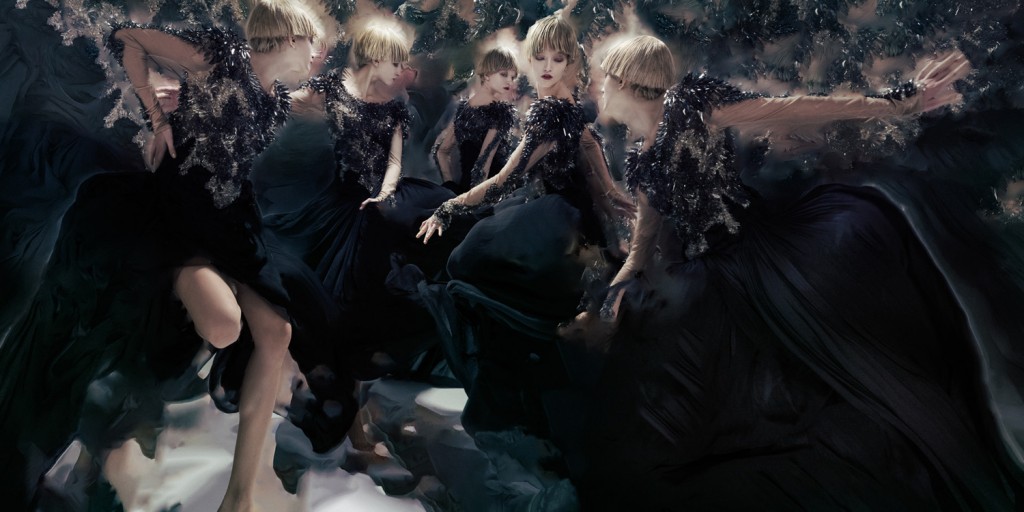
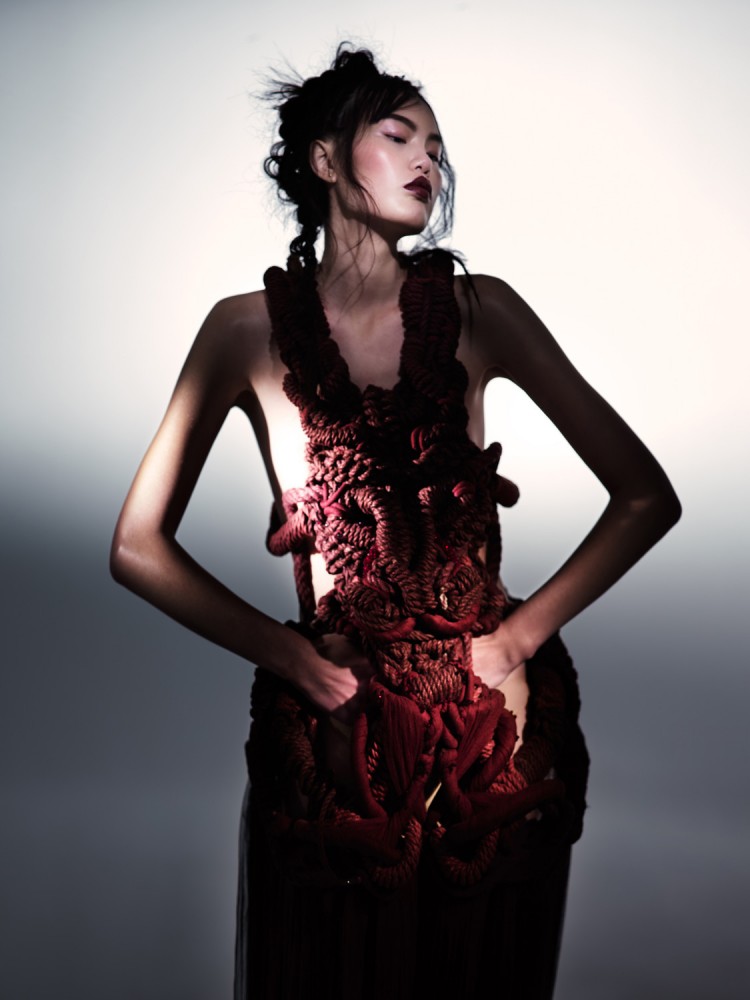
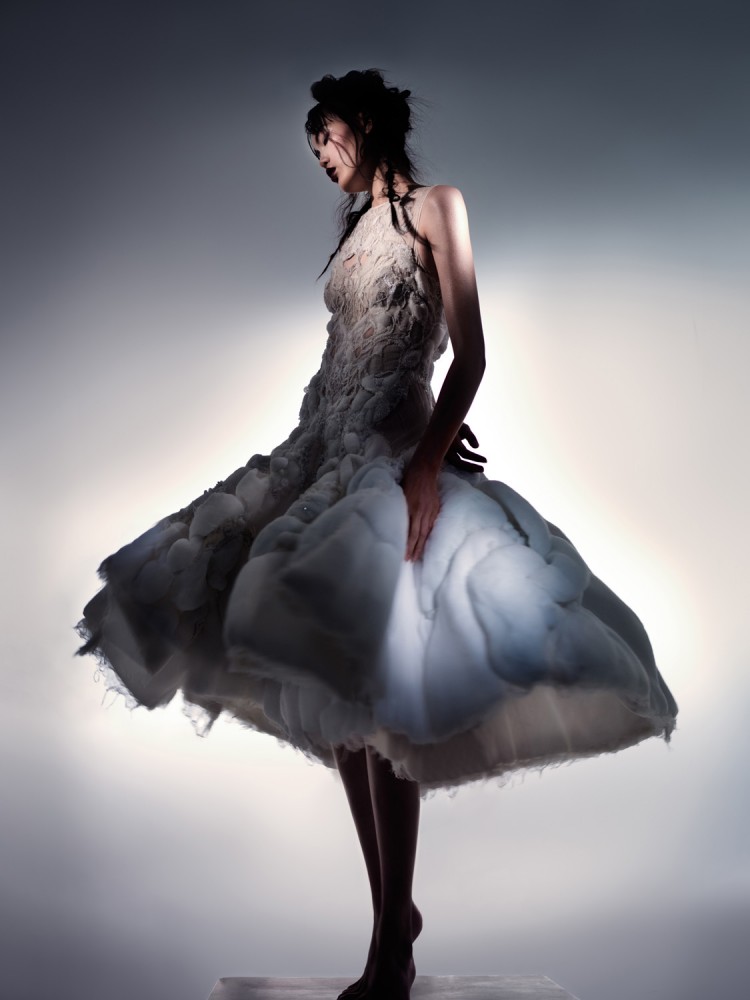
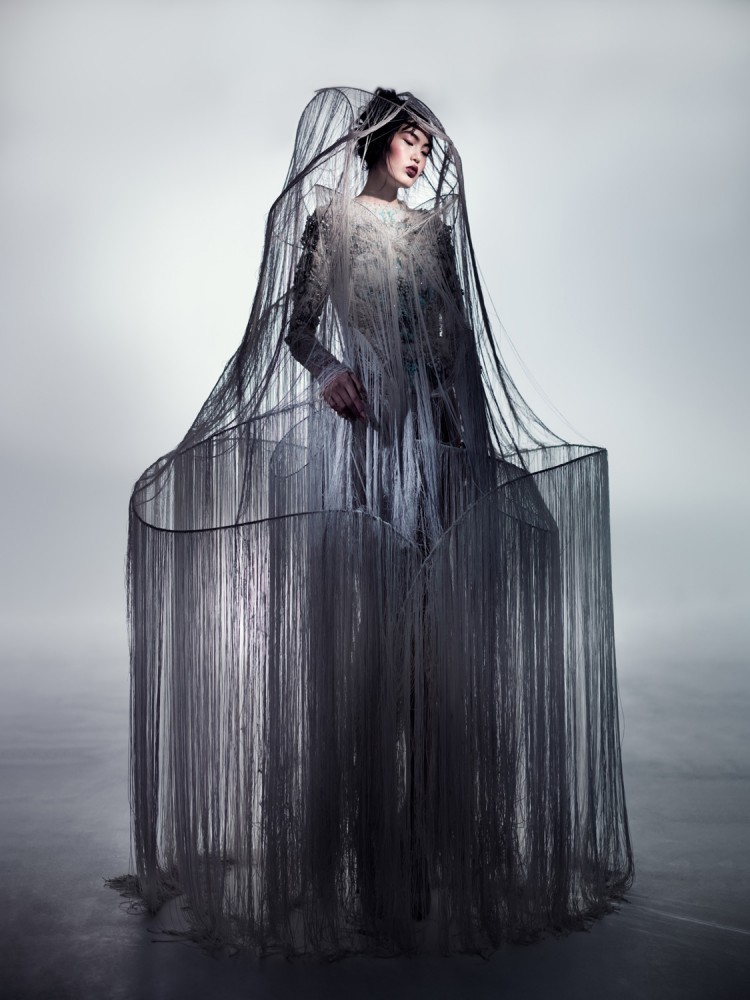
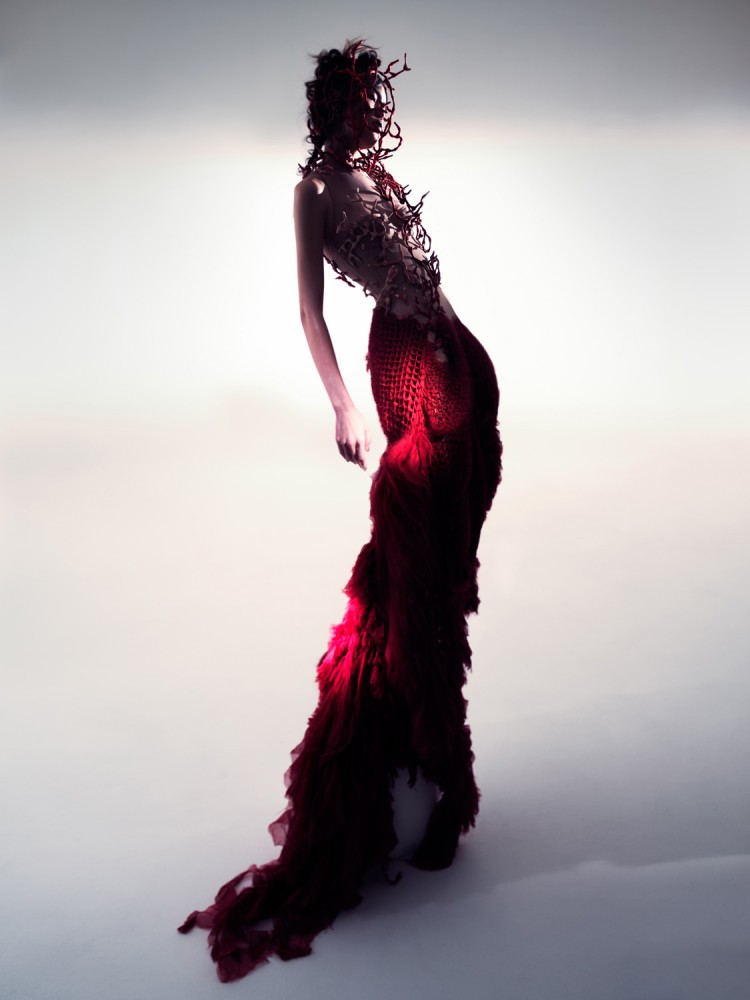
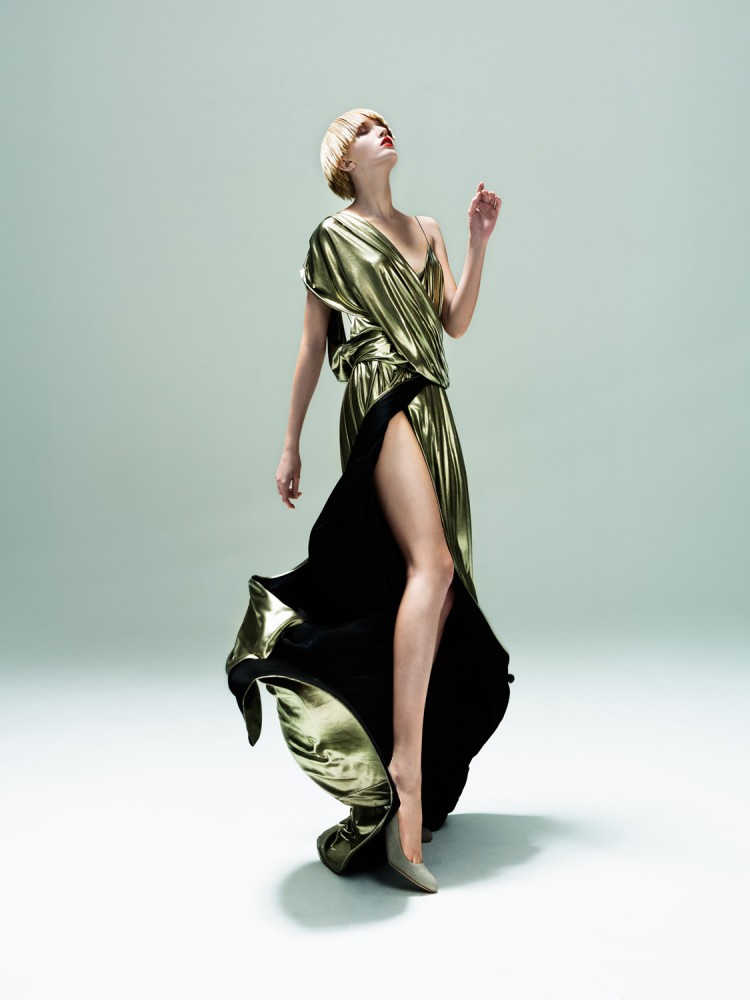
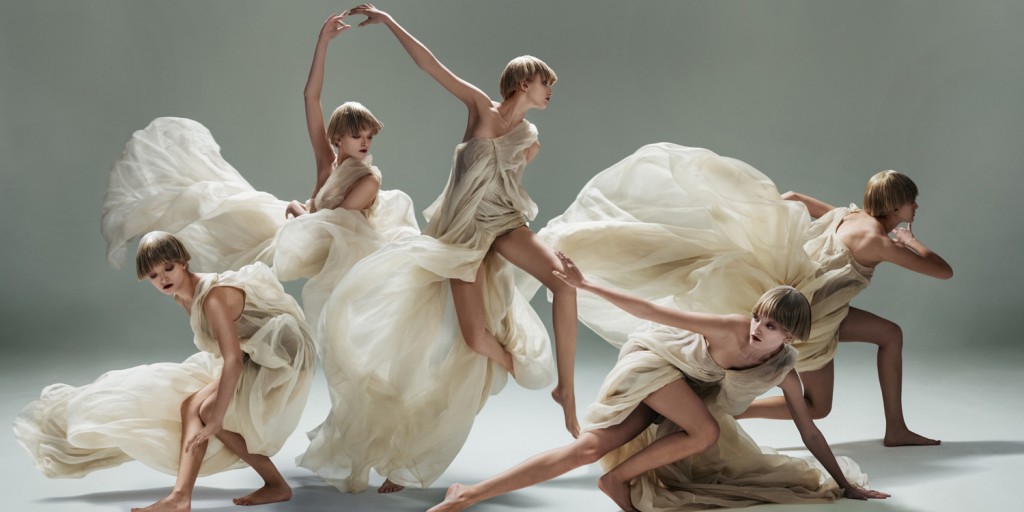
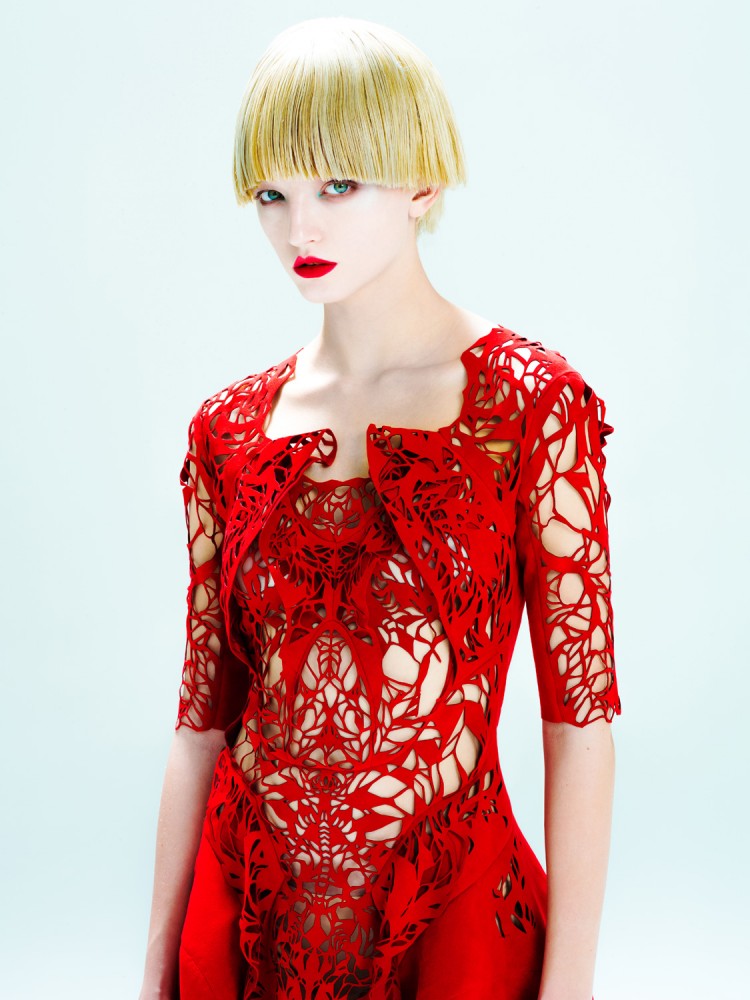
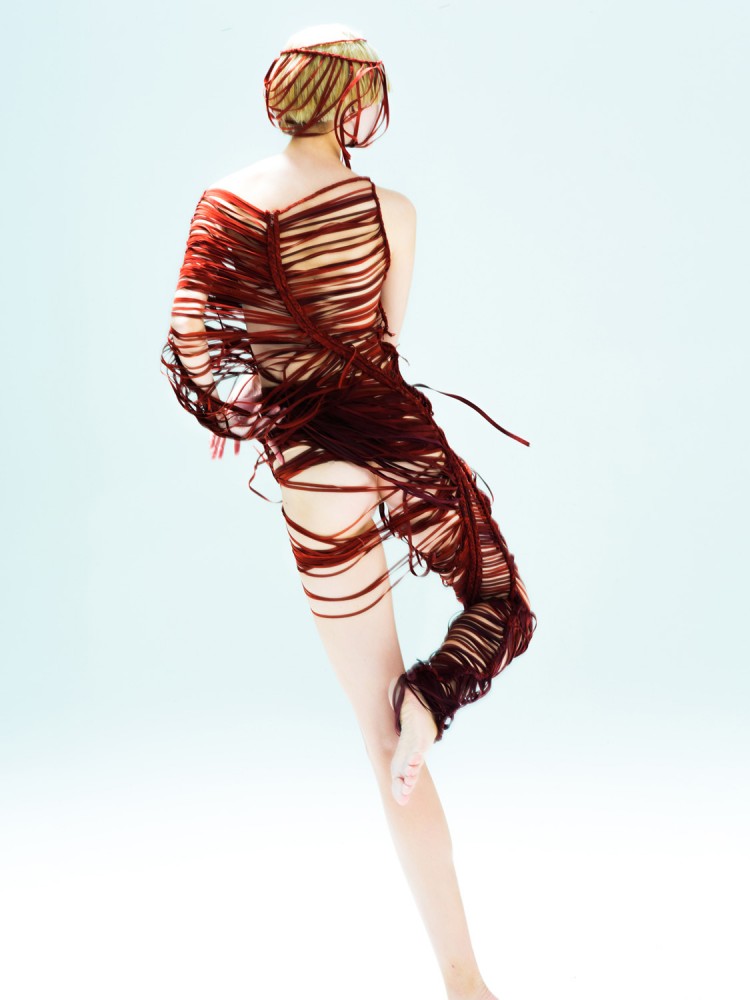
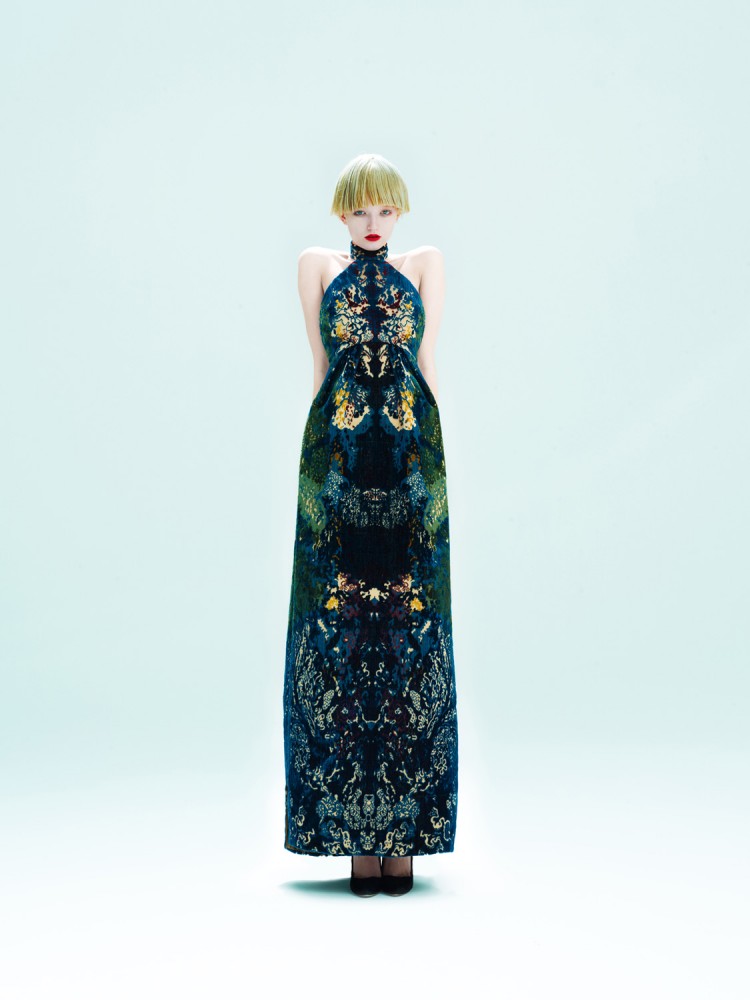
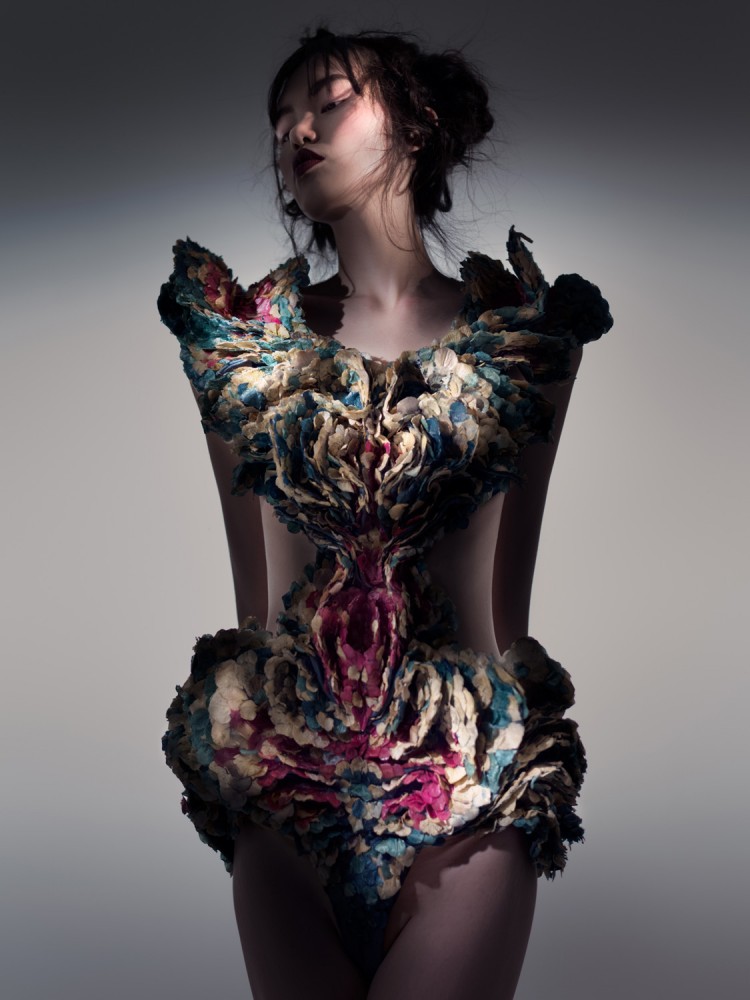
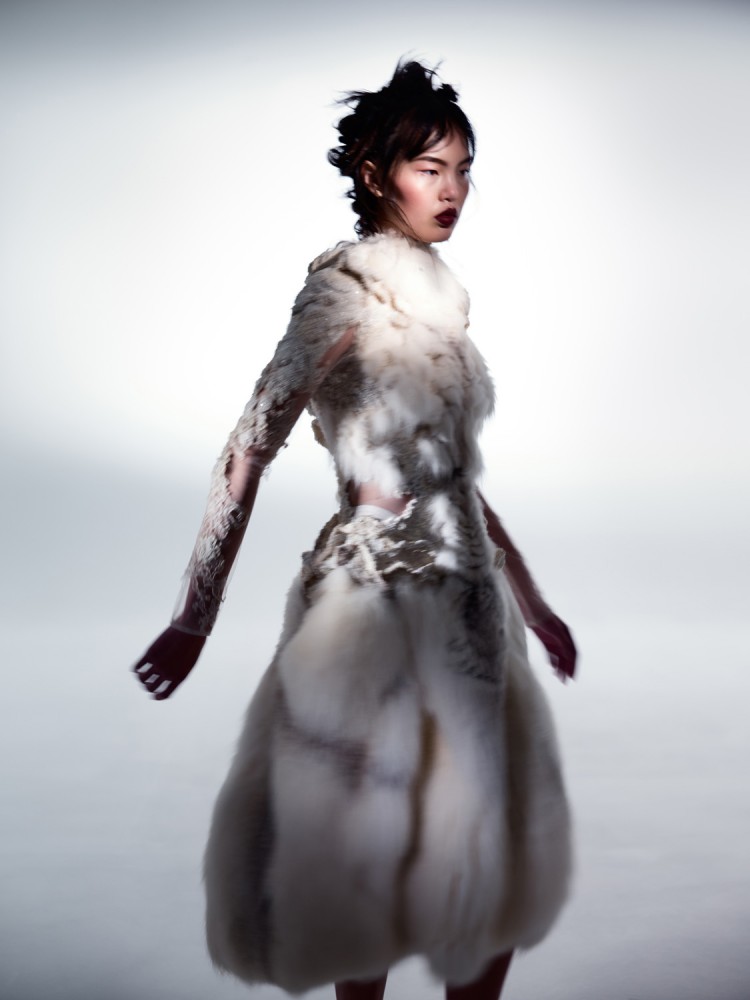
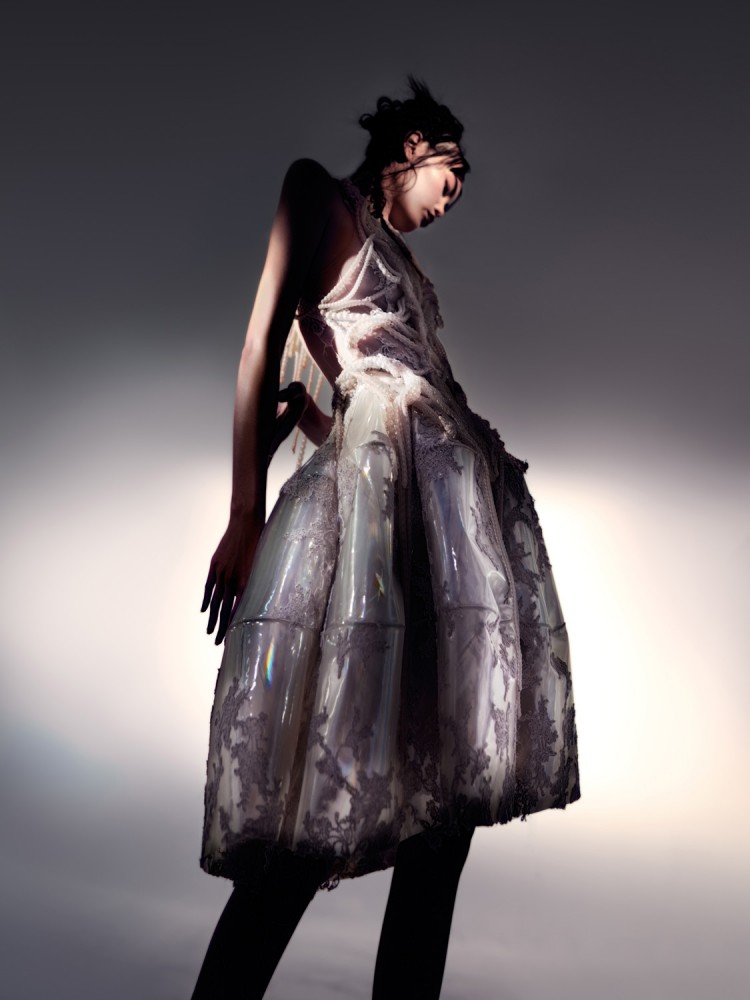
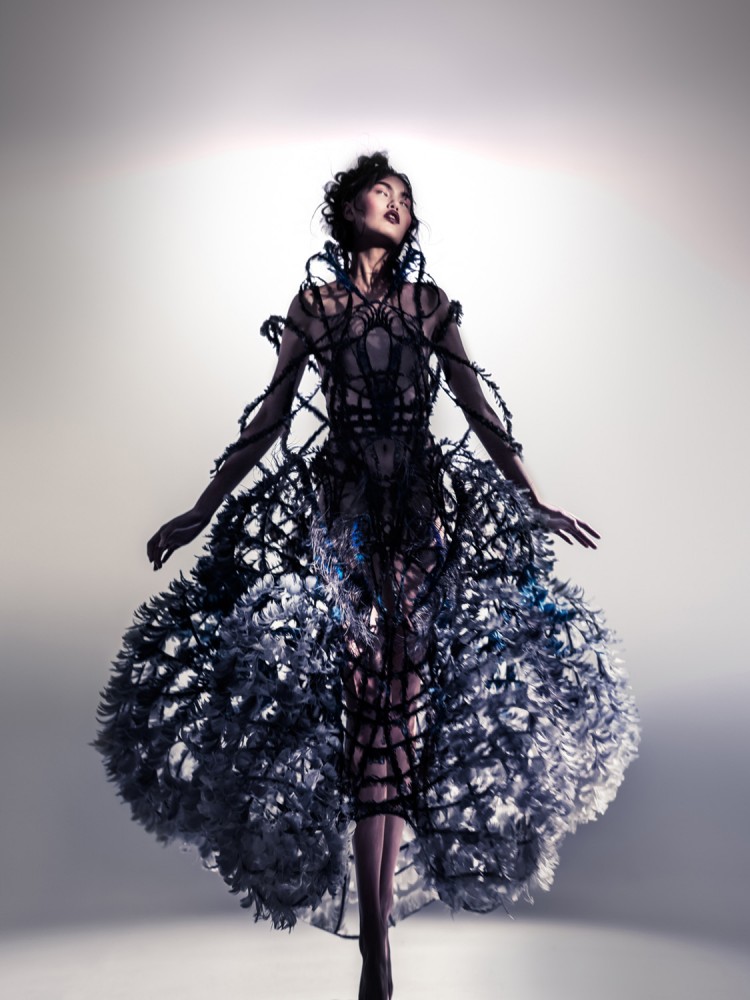
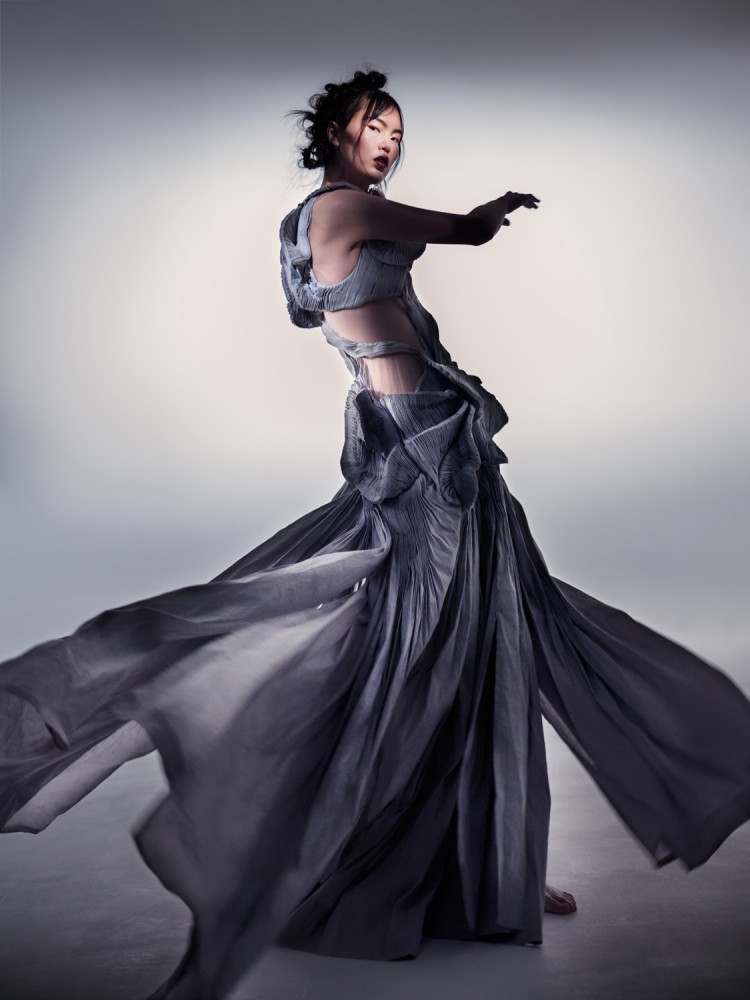
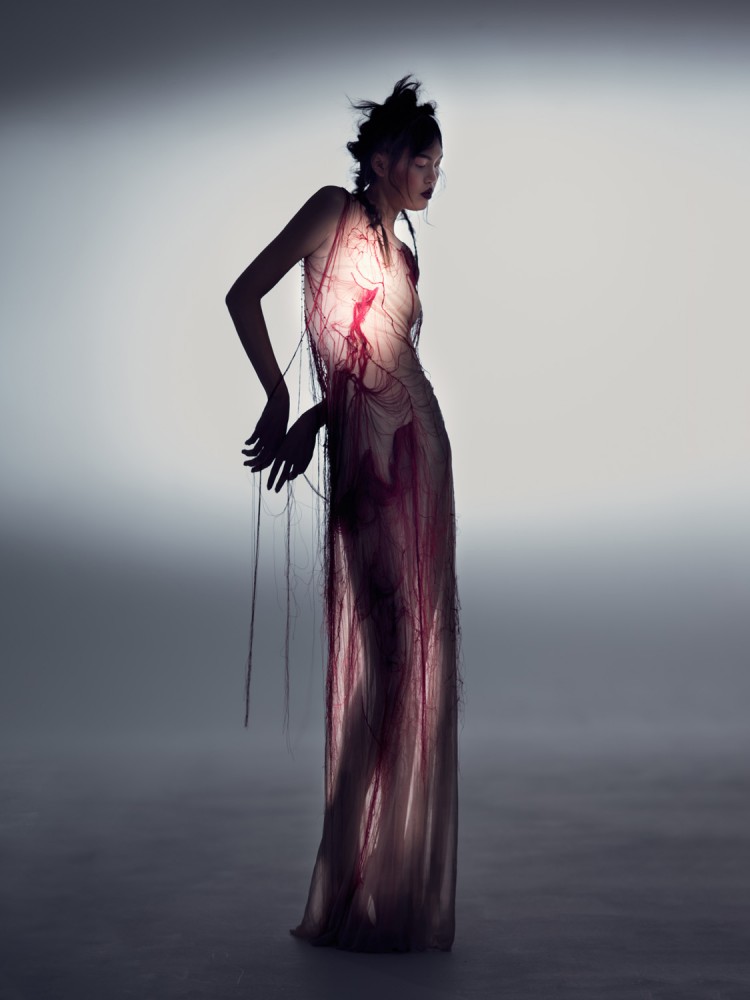
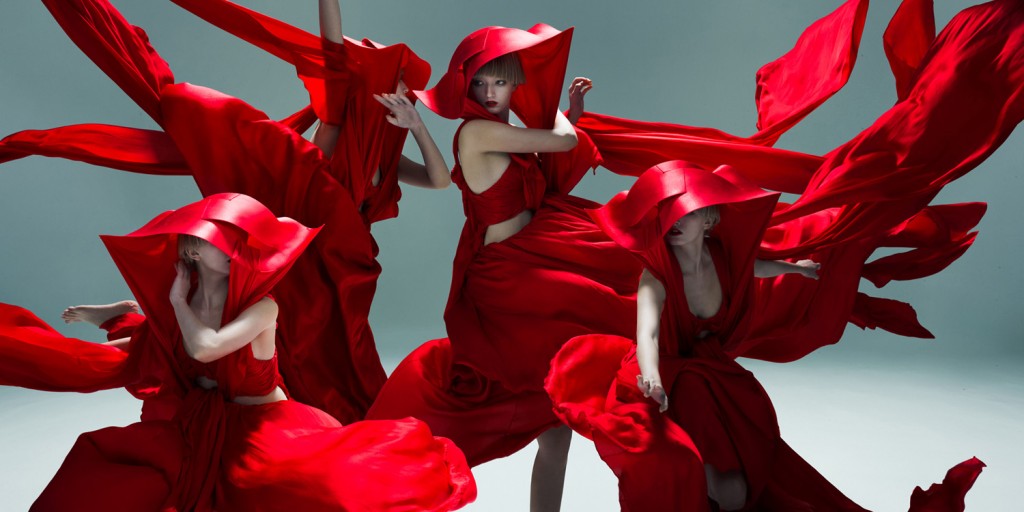

















INTERVIEW
Mikael Wardhana
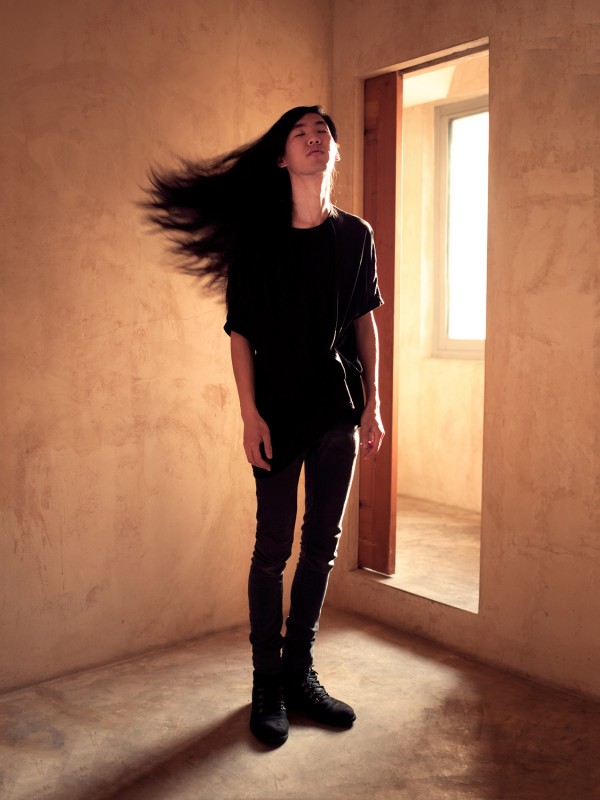
PHOTOGRAPHY Mikael Wardhana FASHION DESIGNER Yi Qing Yin MAKEUP ARTIST Delphine Premoli HAIR STYLIST Rimi Ura & Yumiko Hikage PRODUCTION & STYLING Jessica Solomon, Lola Cazeneuve, Camille MODELS Yudu Zeng & Katherine Konlin CAMERA Leica S with Summarit-S 35mm f/2.5 Asph., Summarit-S 70mm f/2.5 Asph., Apo-Macro-Summarit-S 120mm f/2.5 Asph.
Artist and couturiere Yi Qing Yin says that the creative process is only perfect if she succeeds in evoking the soul of a garment. The one-of-a-kind designer contrasts sumptuous armour with fragile and airy structures. In collaboration with Yi Qing, the Australian photographer Mikael Wardhana set the stage in Paris for his visionary interpretations of her motto exclusively for the S Magazine.
S Magazine: Your photo shoot has a romantic touch, but with a technical brilliance and a somewhat intellectual approach at the same time - how and why did you go for this visual direction and what is your aesthetic goal?
Mikael Wardhana: I’ve always been attracted to a slightly darker shade of beauty. It is just very natural for me to go for a more sombre romantic approach when it comes to choosing colours or looks. It’s very hard for me to make images of something playful, cheerful and brightly coloured. No matter what I do, I always fall back into the slightly romantic feeling.
And also, tt doesn’t help that I always refer back to the dramatic lighting in Caravaggio’s paintings, the sombre expressions in William Adolphe Bouguereau’s paintings and dramatic body movements of ancient Greek and Roman sculptures.
At the time when I was conceptualising this photo shoot for Leica, I was heavily inspired by the statue of La Danse by Jean Baptiste-Carpeaux in front of the Palais Garnier in Paris.
Do you have any role-models or inspirational photographic idols?
I try not to look at other photographer’s work too much. I am aware of the legends’ work but I don’t want to study them too deeply as it may cloud my direction. There’s always that temptation to recycle the work of our idols, but that’s not what we want.
I try my best to get my inspiration from as many types of art as possible beside photography, including painting, sculpture, music and dances. The idea is to get diverse sources of inspiration and therefore I can form my own opinion – an opinion that is then translated into a more distinctive work.
At the moment I love Auguste Rodin’s incredible bronze sculptures. His sculpture shakes me to the core with amazing depth and darkness. I could stare at Gustav Klimt’s paintings for hours to understand about romanticism and beauty. I listen and watch amazing young musicians/performers like FKA Twigs to understand about how sex and sensuality can be projected beautifully. I watch amazing dance performances to be inspired by the strength, agility and passion.
And finally as far as photography goes, I look up to Nick Knight for his relentless effort in experimentation and innovation. At the opposite end stylistically, I also look up at the work of a young Chinese photographer, Ren Hang, and the young American photographer Ryan McGinley.
The pictures show enormous energy in their realization. What were the main challenges in bringing them to life? For example the full-length portrait of the silver structured dress in lines and stripes of fabric, or the frozen dance scene.
I think the main challenge was to strike a balance between planning the images well enough and letting “accidents” happen during the photo shoot. It needs a fine balance. A picture needs to be alive and not static, lifeless, like you said. And in order to do that, there’s a certain element of surprise or good-accident needed. The idea is to make an image that is non-repeatable.
I came to the photo shoot knowing roughly what the images will look like. I set it up and the rest is about directing the model to flow naturally, asking her to just move in certain ways without over-thinking about it. When the model starts striking regular poses, the images will certainly be lifeless. We don’t want that. We want to capture the moment when she cannot recreate her own movement exactly.
So basically I created the framework for these “accidents” to occur.
Why did you choose Yi Qing Yin as a designer?
I came across her work years ago and you could say it was love at first sight. In the world where fashion is mostly dictated by current trends and consumer demands, Yi Qing Yin’s couture pieces stand out as they don’t seem to answer to any apparent trend apart from her own vision. It was so clear to me that she’s highly idealistic and passionate beyond measure. What she created was more than just garments but wearable sculptural art.
And I think I can also relate to her being born in an Asian country (China) and having lived in Sydney for a little while, and eventually making her way to becoming a successful artist in Paris. I feel somehow she is an artist that can relate to me.
What are your criteria when choosing your models?
When I started photography many years ago, I was overly concerned about looking for a model from a renown modelling agency with good reputation. Basically I was looking for the model currently in season. But I soon realised that that’s not the way to go.
Good models are not limited to those who abide by the typical standard set by the fashion industry. And I think the world is moving that way. There is new appreciation for diversity in beauty. Models with different shapes, different colours and different types of quirkiness are becoming accepted more nowadays and this is a very good thing.
I think really good models who are going to make it to the top are ones with tons of personality. They are not just mannequins that you put clothes on, but they are unique people with unique qualities. That makes them interesting and creating images with them is more meaningful. I am always on the lookout for new faces to make images with.
Your background is Australian-Indonesian and you are working in Sydney. Do your cultural roots and your home influence your work?
As much as I’d like to say “yes” that my cultural background has played a big role, I can’t say that is the case. As with many other Asian youth brought up in ultra-conservative families, we were not encouraged to develop a strong identity and individuality. But I don’t see it as a disadvantage or a hindrance. On the contrary I see that as a new start to be unique, not bound by anything.
It wasn’t until I moved to Australia alone in 2004 that I started growing and learning about myself and what I am actually made of. A long and arduous process of self-reflection and learning to express myself. But it is exactly this mission of expressing individuality that brought me into photography in the first place. That is the main attraction to me.
You travel widely around the globe. Do you see yourself as a cosmopolitan? Do you have favourite places, countries, cities?
Not only travelling a lot, I also had the opportunity to live and work in several countries and it’s been a quite a journey. I've been living out of my suitcase for quite a long time; I haven't settled in the same country long enough in the last 2.5 years or so. The most interesting out of all these adventures would have to be working in China for 1.5 years. But I always call Sydney home and I do have so much joy coming back to Indonesia for a visit every now and then.
So to answer your question, am I a cosmopolitan? I don’t know. A globe-trotter would be more precise.
In which direction you see your career enfolding in the next decade? Do you have a dream as a photographer, a project you aspire to in the future?
I’m dedicating the next immediate years to learning new skills and developing them. As I said earlier, I realised that the purpose of what I’m doing is communication and that means I must not be confined by the boundary of still-traditional photography. With the advent of the Internet, we are at the juncture of a new era and it needs new way of doing things and new way of seeing things. I'm going to incorporate more 3D, and presenting more moving images and semi-moving images (very short clips) to present my work. Hopefully I will make interesting and unique work in the next few years.
For your photo shoot for S Magazine you used the S System. What kind of experience did you have with the camera? Where were the differences to other products and how did that influence your work?
As a proud owner of the Leica M system, I’ve always been aware of the incredible construction qualities of Leica cameras and lenses. I didn’t expect anything less in regard to the S. I expected the best, and I wasn’t disappointed. The S camera is an amazing camera to hold and use, and more than that, it is a camera that inspires. Sounds silly, but it is very important for me to have this emotional connection to the camera that I’m using. A camera is more than just a tool, but it’s also your assistant and a friend on a photo shoot, therefore it must have that personality. And the Leica S definitely has that irresistible allure to it.
I also own a Hasselblad Digital H system that is my workhorse. Being a modular system, the Hasselblad H cameras do feel a little less robust compared to the mono-bodied S cameras. I feel that the S camera can withstand more rugged treatment that you expect on set. However, I must admit that I miss the Hasselblad’s 6x4.5 image ratio as it is more suitable for most magazine’s layout. The Leica S system has a 2x3 image ratio and most of the time I have to crop the top and bottom of the image to suit magazine layouts. This is, however, not a big deal, as the Leica S has plenty of resolution that allows cropping freely.